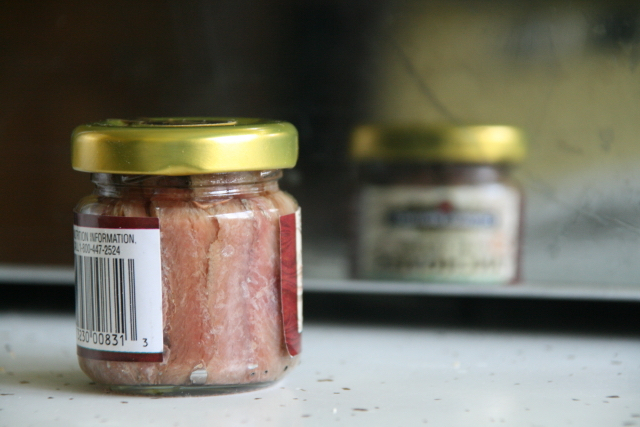Should I Use Anchovy Paste Or Fillets?
If you've clicked on this story thinking, "I don't like anchovies and pity the fool who uses either paste or fillets," let's have a quick pep talk. You love Caesar salad, and you crave pad thai in your sleep. Why? Because they taste good. And why do these beloved things all taste good? Umami, from anchovies, in the form of Worcestershire or Asian fish sauce (if you were wondering what made them tasty).
Anchovies are among the least understood of fish, right up there with the oily and unpopular sardine (not my words, I love the things) and legitimately frightening (and largely inedible) piranha...at least in the States. In Asia, anchovies' salty little spirits live on in the broth of any soup you consume, especially in Korea. I haven't taken a trip to Spain, France, Italy, Germany, Scandinavia, the Netherlands, North Africa or South India without experiencing them in their stark naked entirety, usually served with lemon (and booze). But for this explanation, let's direct our attention toward the two common forms you'll find at the supermarket: jarred fillets and paste.
Anchovy paste is processed and ready to melt into sauces, soups, stews, marinades, dressings, spreads and compound butters. The benefit to using the paste is having anchovy flavor handy at a moment's notice, which will encourage you to use it more. If you make your own salad dressing from fridge door and pantry components like Dijon mustard, horseradish, caper juice, lemon juice/zest, dried or fresh herbs and honey (and you absolutely should), a big smudge of anchovy paste will add incredible depth and a wonderful clingy texture to the finished product. The paste stays fresh in its metal tube, with minimal exposure to oxygen, and a little goes a long way. The only disadvantage is you can't really use it as a topping the way you would with whole fillets.
Anchovy fillets typically come prepared in a jar or can of olive oil, which not only preserves the fillets but infuses the oil with intense anchovy flavor that can be used to enhance any recipe that calls for anchovy. Try anchovy oil in spaghetti aglio e olio, and you'll never go back. They range in quality from "eh" (kind of a muddy purple-gray with a mushy texture but still better than no anchovies at all) to "beautiful" (bright white and silver with firm flesh and a pronounced but clean saline flavor). You can chop fillets coarsely or mash them finely fairly easily for a subtler presence, or lay them whole on top of crostini or pizza, or tuck a couple in your sandwich (they really make sliced turkey taste like something instead of nothing). Add them to your steak tartare and discover how much more addictive it is.
So pick up both, use them well and try them in applications that seem logical. Some things that seem to need salt, soy sauce, tomato paste or amino acids may really be asking for anchovy.



